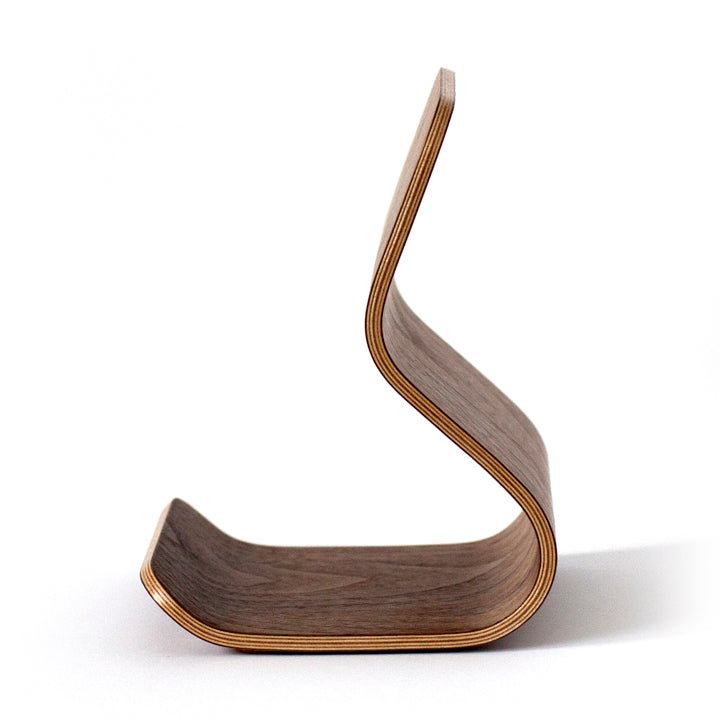
Why Bent Plywood?
I get asked all the time how I got started in hand crafting bent plywood furniture and what's my inspiration, so here's some of the story:
Born and raised in the suburbs just north of Detroit, there wasn't a big emphasis on art or design. They were subjects I enjoyed in school, but I felt a huge push towards pursuing a career in math or science. Therefore, engineering was my first pursuit.

Fortunately, through my job at the GM Technical Center in Warren, MI, I was introduced to the simple, understated beauty of mid century modern architecture and design. I was always the one who volunteered to represent engineering in meetings at the design center - not only did I get to experience the beautiful design center lobby with its gorgeous suspended stairs that lead up to the studios, but it was my chance to pick designers brains on how they got to where they are. I have since come to learn about the history and intent of the campus’ design and it is definitely the spark that led me in the direction of becoming a designer (Dwell magazine has a great little article on the design of the GM Technical Center here).
While at GM I enrolled at The College for Creative Studies in Detroit, and it only took about one semester of juggling work and school for me to realize that pursuing design full time was my next step. With the freedom to focus just on school, I was able to explore classes beyond my product design major. My junior year I took a furniture class that focused on bent plywood, and I was hooked. I loved the process of designing and hand making durable, functional products from what was previously flimsy, bendy wood.
After graduating from CCS, I started making the Ray tablet stand and other bent plywood things in my spare time. It eventually grew from a fun hobby making dust in my parents cluttered basement to a legitimate business with happy paying customers.

Modern classics of the Mid-Century and Danish Modern designers like Charles & Ray Eames, Eero Saarinen, Florence Knoll, Harry Bertoia, Arne Jacobson, and George Nelson are the biggest influences of my designs. They inspire me with their nods toward nature, respect for materials and clean, unadorned designs that are both functional and beautiful.
For each piece I make, I build a form by hand, cut out individual layers of material, then carefully apply glue to each layer, clamp the layers to the form, trim, sand and rub on the finish. Each piece takes days to complete. It’s definitely faster and cheaper for huge manufacturers to mass-produce molded plywood products on robotic assembly lines half a world away, but their products lack a certain soul. There’s an attention to detail, a love of material, a passion for perfection that is evident in a handmade Ciseal product. My furniture and accessories are designed to be used, loved, and enjoyed every day - hopefully for years to come. Nothing is more beautiful than a bent plywood piece that shows through its nicks, scratches, and worn veneer that it's been loved for a lifetime.

Check out what's resulted from this journey: Ciseal's Collection
If you'd like to follow along on the rest of this adventure, feel free to sign up for our email newsletter


